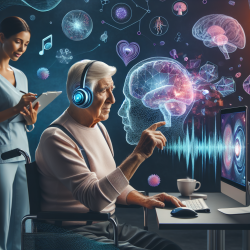Introduction
In the realm of autism spectrum condition (ASC), understanding the intricate mechanisms that contribute to its development is crucial for practitioners seeking to enhance therapeutic outcomes. The research article "From molecules to neural morphology: understanding neuroinflammation in autism spectrum condition" sheds light on the significant role of neuroinflammation in ASC. This blog post aims to explore the implications of these findings for practitioners and encourage further research in this field.
The Role of Neuroinflammation in ASC
Emerging evidence suggests that neuroinflammation plays a pivotal role in the early development of ASC. The study highlights the atypical expression of molecular markers in various bodily fluids and brain tissues, indicating inflammation's potential impact on neural development. Key findings include:
- Microglial activation and its role in synaptic pruning, which may contribute to the atypical neural connections observed in ASC.
- The association between increased head size in ASC individuals and a history of allergic/immune disorders, suggesting a link between neuroinflammation and neural development.
- The overexpression of gene networks involved in immune processes in the brains of individuals with ASC.
Implications for Practitioners
For practitioners working with children with ASC, these findings underscore the importance of considering neuroinflammatory processes in therapeutic interventions. Here are some actionable insights:
- Incorporate Inflammation Awareness: Be aware of the potential role of inflammation in ASC and consider this when developing therapeutic plans.
- Collaborate with Medical Professionals: Work closely with medical professionals to monitor and address any underlying inflammatory conditions that may impact therapy outcomes.
- Personalized Therapy Plans: Recognize the heterogeneity of ASC and tailor therapy plans to address individual needs, potentially incorporating anti-inflammatory strategies.
Encouraging Further Research
While the study provides valuable insights, it also highlights the need for further research to fully understand the role of neuroinflammation in ASC. Practitioners are encouraged to stay informed about ongoing research and consider participating in studies that explore the intersection of neuroinflammation and therapeutic interventions. By contributing to the body of knowledge, practitioners can help shape more effective and evidence-based approaches to ASC therapy.
Conclusion
The research on neuroinflammation in autism spectrum condition offers a promising avenue for improving therapeutic outcomes. By integrating these insights into practice and supporting further research, practitioners can play a pivotal role in enhancing the lives of children with ASC. To delve deeper into the original research, please follow this link: From molecules to neural morphology: understanding neuroinflammation in autism spectrum condition.










